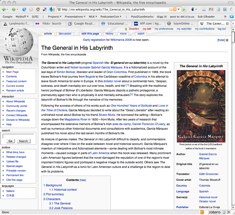Mark Bauerlein is a tenured humanities professor at Emory University, and he has just published a new book, The Dumbest Generation. In a podcast interview, conducted by Texas educator, Tim Holt, for Intended Consequences, Bauerlein said that the thesis of his book is simple, that,
..teenagers and young adults, in America today, are drowning in a tidal wave of teen, youth, stuff, delivered through digital tools, and the adult realities of history, civics, foreign affairs, politics, and fine arts can’t break through.
I couldn’t agree more, though I don’t blame the technology. The author, himself, says,
When we talk about the Internet, we have to acknowledge that this is a miraculous resource. It contains knowledge and art, works in the Metropolitan Museum of Art, old documents, maps, definitions, Wikipedia, historical sources. It’s all there, and we can access it in ways we never could before.
He continues, though, that this is not where the teenagers are going. Referencing a Neilsen survey, Mark said that 9 of the top 10 web sites that kids go to are for social networking — contacting each other. Well, no surprise here, as both Bauerlein and Holt mention. Kids are going to access what kids are interested in. What’s happened is that, through technology, kids are able to immerse themselves in the social experience, in bedrooms that are often a multimedia center.
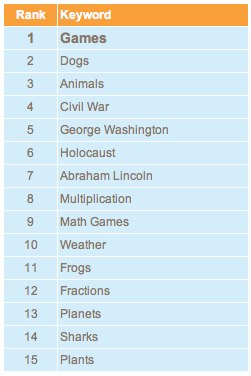 I don’t think the answer, though, is to not bring the technology into the classroom, as Bauerlein implies. According to Thinkronize, makers of the NetTrekker child-safe Internet search engine reportedly used in 20,000 schools world wide, the top five search terms entered by students in school are games, dogs, animals, Civil War, and George Washington. ((“Index Reveals What Kids are Searching for Online.” eSchool News 16 May 2008 20 May 2008 <http://www.eschoolnews.com/news/top-news/index.cfm?i=53830;_hbguid=084225dc-6d5d-4c92-8323-0a7aefe1f9bb>.)) See the right for the top 15 searched terms. Again, the fault is not the technology.
I don’t think the answer, though, is to not bring the technology into the classroom, as Bauerlein implies. According to Thinkronize, makers of the NetTrekker child-safe Internet search engine reportedly used in 20,000 schools world wide, the top five search terms entered by students in school are games, dogs, animals, Civil War, and George Washington. ((“Index Reveals What Kids are Searching for Online.” eSchool News 16 May 2008 20 May 2008 <http://www.eschoolnews.com/news/top-news/index.cfm?i=53830;_hbguid=084225dc-6d5d-4c92-8323-0a7aefe1f9bb>.)) See the right for the top 15 searched terms. Again, the fault is not the technology.
Certainly when he and I were young (Mark’s only a half-dozen years younger than me), we played in the neighborhood with friends until dark, then came home where we read books, did homework, spent time with parents, watched a little TV, etc. Aside from spending more time with parents, I don’t really see the difference. I knew kids back then who spent hours on their Princess phones, and I remember educators complaining about the junk kids were reading.
Bauerlein is painting a picture designed to envoke fear and provoke caution. It’s not that different from the stories that I tell to envoke fear and provoke investment in modernizing classrooms. If I were to challenge him when he says, that bringing blogging and podcasts into the classroom is a strategic mistake, he’d acknowledged, as he does several times in the interview, that there is huge potential. I’m often challenged, “Are you saying that we should throw out this, that, and the other?” No! Our enthusiasm reaches a boil, and we all have to work hard to temper it.
Bauerlein questions all of the claims about jobs becoming obsolete, and I have to agree that we’re taking statistics and twisting them to support our arguments. I recently researched the “10.2 jobs before you turn 38” claim, and found that it was based on citizens born between 1957 and 1964, and that half of those jobs happened before we turn 22. Before I graduated from college, I’d worked as a short order cook, played in bands, washed cars, waited on tables, played guitar in coffee houses for tips, loaded freight cars, and worked in a machine shop. Nothing new!
I questioned the 55th among IT using industries claim in a blog entry the other day (Another “Aha!” Video).
Yet, I still believe that we are preparing children for a future that we can not clearly describe that being a lifelong learner is perhaps the most important skill we should be teaching today … learning-literacy.
Finally, I continue to question the research complaint, that there is no research to show that technology improves achievent. First of all, there is. But that’s beside the point. I don’t think that we should be investing (much) more in providing convenient access to digital, networked, and abundant information to students and teachers to improve test scores. I think we should be doing it because today’s information environment is digital, networked, and abundant. Computers and the Internet are the pencil and paper of our time — and insisting that our children can learned to be ready for their future by scratching and stamping text on paper and reading published textbooks, is like saying that children could learn with clay tablets, long after paper was widely used. Computers and the Internet have changed how information works and how we work it. Kids can’t learn this in five-year-old textbooks and spiral notebooks.
Nobody guaranteed that we’re going to learn how to make this work in one year, ten years, or even twenty-five. It’s going to take time, freedom, inventiveness, collaboration, caution, and time time time.
By the way, I learned about the podcast over Twitter. 😉
 Of course this issue is of special interest to an independent school, such as the Shanghai American School. But the online profile of all schools have become more important as more of us are hoping on board, and especially as more of the content that we access comes from each other rather than just through Google searches.
Of course this issue is of special interest to an independent school, such as the Shanghai American School. But the online profile of all schools have become more important as more of us are hoping on board, and especially as more of the content that we access comes from each other rather than just through Google searches. 
 I don’t think the answer, though, is to not bring the technology into the classroom, as Bauerlein implies. According to
I don’t think the answer, though, is to not bring the technology into the classroom, as Bauerlein implies. According to 
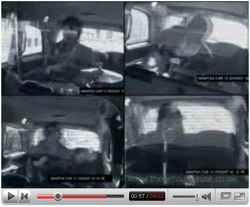
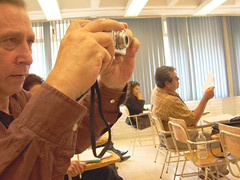
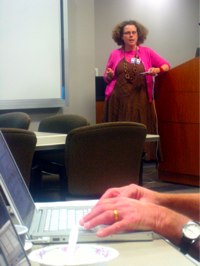 I’m back at CTAP 3 for their Coordinating Council Meeting, with various presentation during the morning.
I’m back at CTAP 3 for their Coordinating Council Meeting, with various presentation during the morning. Alan Phillips, of
Alan Phillips, of 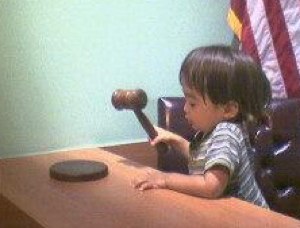 Yesterday, a Los Angels court awarded MySpace $230 million dollars in its law suit against the so-called Spam King,
Yesterday, a Los Angels court awarded MySpace $230 million dollars in its law suit against the so-called Spam King, 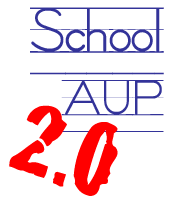 But that’s not the point. I want to let you know about a new wiki site that I’ve been working on over the past couple of weeks. It’s not a topic that I have any real expertise in — which is why I made it a wiki, I guess. However, it is a topic that is coming up increasingly in conversations, and one that is related to the perennial discussions about inappropriate content and unsafe net practices.
But that’s not the point. I want to let you know about a new wiki site that I’ve been working on over the past couple of weeks. It’s not a topic that I have any real expertise in — which is why I made it a wiki, I guess. However, it is a topic that is coming up increasingly in conversations, and one that is related to the perennial discussions about inappropriate content and unsafe net practices.